THE WASHINGTON POST
GovBeat
By Reid Wilson July 16, 2014
A years-long drought and a warmer-than-average winter have Western states worried they face extraordinary challenges in what by many estimates will be a record fire season.
The National Interagency Fire Center says the threat of wildfires is already above normal in much of Oregon and California, and the high desert in Washington, Idaho and Nevada. Parts of Arizona remain under heightened threat, too.
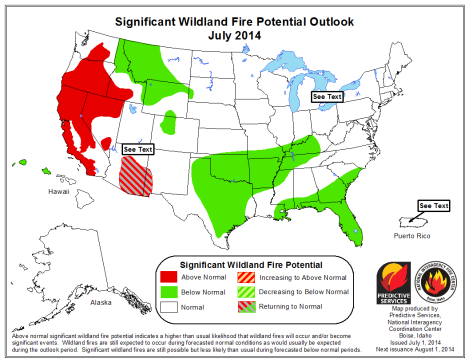
The drought that has parched Western states over the last three years has led to dangerous fuel conditions that, as the summer heat intensifies, will only get worse.
“The vegetation is so dry, it’s generating so much heat that it’s creating extraordinary conditions,” Ken Pimlott, director of CalFire, said in an interview. He called those conditions “unprecedented.”
Until this week, the number of fires burning in Western states had been below recent yearly averages, giving hope to cash-strapped states that predictions of an out-of-control fire season were overblown. But lightening storms in Oregon and Idaho and a heat wave that brought 90 to 100-degree temperatures have ignited a wave of new fires.
“Within the last five days, we were far, far below average. That’s in the process of changing right now,” said Randall Eardley, deputy chief of external affairs at the National Interagency Fire Center. “We’re still trying to get a handle on how much fire is in Oregon. But it’s a lot.”
Pimlott was among local officials from California, Colorado and Arizona who testified Tuesday before the Senate Energy and Natural Resources Committee on the threats posed by this year’s fire season. The White House has asked Congress for $615 million to fight fires, in part to clear the fuel that leads to more intense burns.
But Congress is unlikely to give the Interior Department the additional money. The House Appropriations Committee on Tuesday approved almost $4.1 billion for wildfire prevention and fighting, $150 million higher than last fiscal year.
House Republicans and Senate Democrats might agree on another change to firefighting policy states are advocating: Members on both sides say they support changing the way money for catastrophic wildfires is budgeted. Proposals in both chambers would treat catastrophic wildland fires the same way other disasters — like hurricanes, floods or earthquakes — are treated, funding them through disaster cap adjustments.
Current law requires firefighting money to come from budgets set by Congress. As fires get more intense and burn closer to rural and exurban communities, the Forest Service and the Interior Department have exceeded fire suppression budgets in eight of the last 10 years. When the money runs out, those agencies must borrow funds from accounts meant for fire prevention, like clearing fuels — which can exacerbate future fires.
“Ultimately, the real issue for all of us is that when funds are borrowed, it impacts fire prevention,” Pimlott said. “If we keep eroding away at the other treatments that help us mitigate the impacts that we’ve seen, the fire problem will only get worse.”
States like California face acute budget shortfalls as global changes in climate and weather patterns create longer fire seasons. Those states typically seek reimbursement from the federal government to cover fire fighting costs, but those costs are rising. Cal Fire has already battled nearly 3,000 wildfires since the beginning of the year.
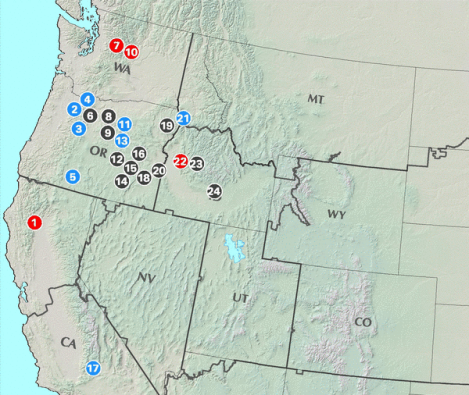
Fires burning more than 100 acres across Western states. The numbers correspond to the priority the National Interagency Fire Center places on each fire in order to allocate suppression resources. (Source: National Interagency Fire Center)
The state legislature increased the agency’s emergency wildfire budget to $209 million for the fiscal year that began July 1. But just six days into the fiscal year, the agency had already spent $13.9 million to fight two major fires in Yolo and Napa counties. Together, those fires burned nearly 11,000 acres.
Cal Fire has hired an extra 300 firefighters and leased an extra air tanker to deal with what it anticipates will be an unusually busy fire season, Pimlott said; the agency has partnered with the state National Guard to prepare to deploy even more crews if necessary.
Twenty-six large fires are burning more than 162,000 acres throughout Western states. Oregon has been hardest hit, battling 16 large fires; California, Texas and Washington are all battling two fires, and Idaho officials are fighting back three blazes. So far this year, firefighters have battled a total of 29,812 wildfires of varying degree.
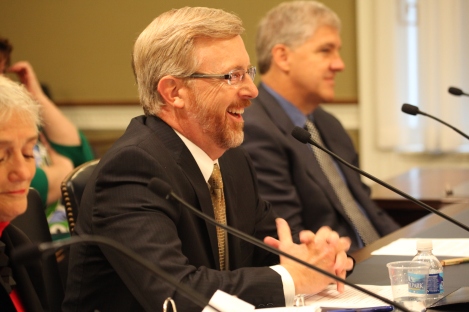

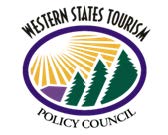

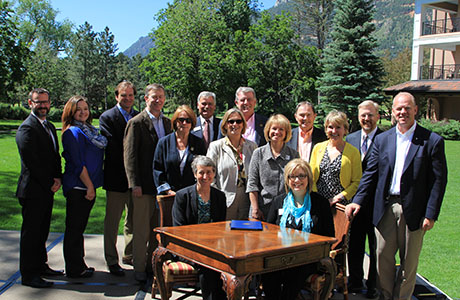
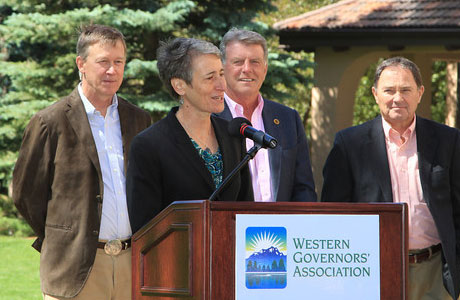 visitors, including international visitors, to visit and vacation in the West. The Departments of Agriculture, Transportation, Commerce, the Army Corps of Engineers, and the Advisory Council on Historic Preservation also are signatories of the memorandum. There could be no better time to renew this partnership. In 2012, President Obama’s launched a
visitors, including international visitors, to visit and vacation in the West. The Departments of Agriculture, Transportation, Commerce, the Army Corps of Engineers, and the Advisory Council on Historic Preservation also are signatories of the memorandum. There could be no better time to renew this partnership. In 2012, President Obama’s launched a
